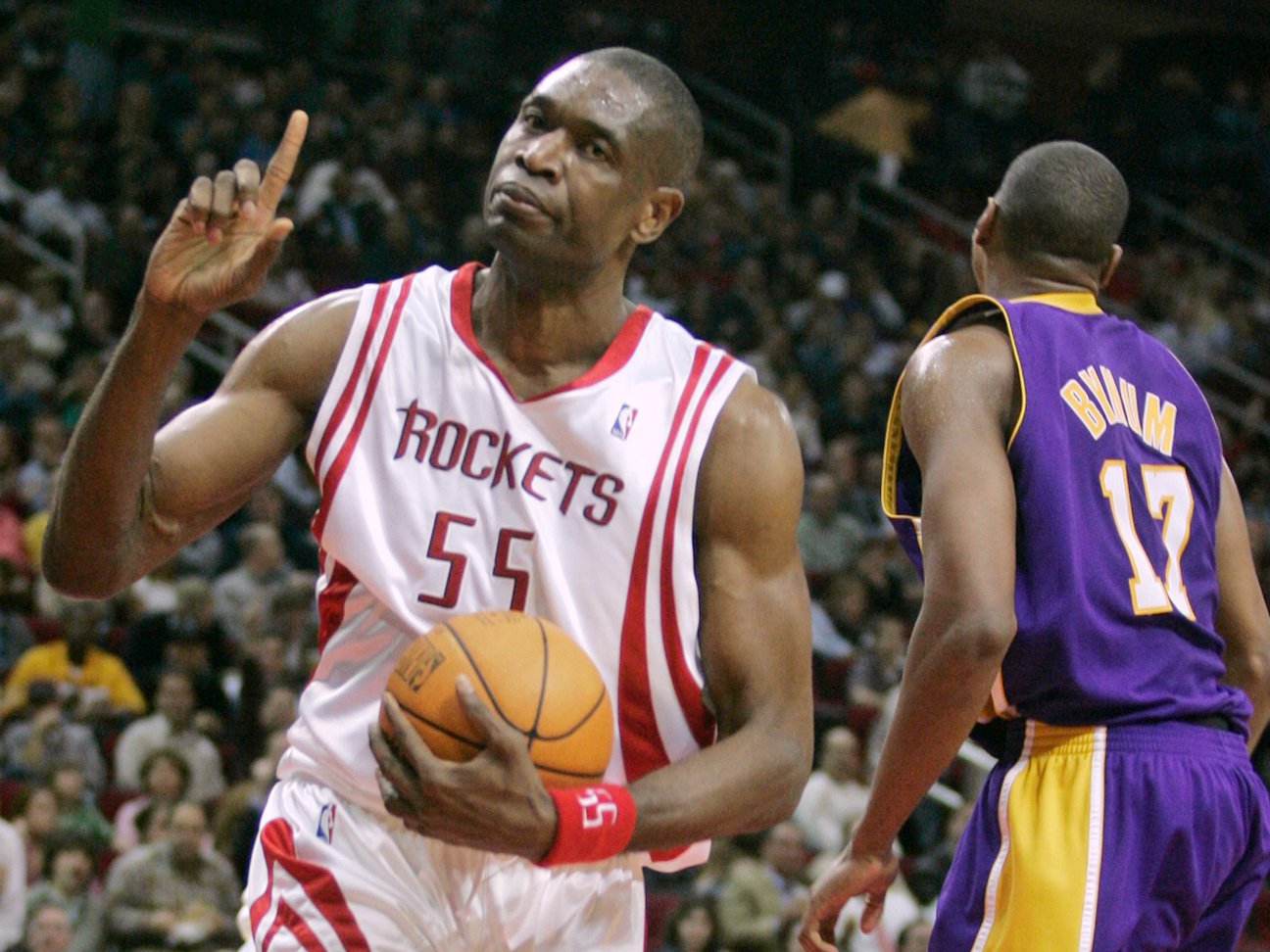 Houston Rockets center Dikembe Mutombo waves his finger after blocking Los Angeles Lakers center Andrew Bynum’s shot during a game in Houston, January 10, 2007.Reuters / Richard Carson
Houston Rockets center Dikembe Mutombo waves his finger after blocking Los Angeles Lakers center Andrew Bynum’s shot during a game in Houston, January 10, 2007.Reuters / Richard Carson
The S&P 500 is up 9% so far this year, and it would like to thank its most trusted allies: high-flying tech stocks.
But the benchmark’s reliance on mega-cap tech has come at a price. Market pessimists have frequently cited the highly-concentrated gains as a negative driver, arguing that while the ride higher is enticing, any unwinding can be swift and brutal.
After all, just 10 companies have accounted for almost half of the benchmark’s return this year.
It’s all a misconception, argues JPMorgan, who doesn’t think the concentrated market move is anything out of the ordinary.
The contribution of tech titans Facebook, Apple, Amazon, Microsoft and Google is in just the 55th percentile when measured against other groups of top-five contributors going back almost 30 years. When the list is expanded to 25 companies, the dynamic seems even more normal, with the contribution dropping into the 51st percentile, JPMorgan data show.
“While equity leadership has been narrowing into growth stocks, history suggests it is not at extreme levels and not far from historic norms,” a group of JPMorgan equity strategists led by Dubravko Lakos-Bujas wrote in a client note.
 The contribution of the top 5 stocks YTD is in line with history, and below average on a trailing 60-day basis.JPMorgan
The contribution of the top 5 stocks YTD is in line with history, and below average on a trailing 60-day basis.JPMorgan
While stock bears have been stressing caution, some have gone as far as to compare the current environment to the dotcom bubble. Once again, JPMorgan doesn’t agree. The firm argues that market-leading stocks are contributing far more to earnings than they did during the tech bubble, making it a far less precarious situation.
While the top five stocks of 2017 have accounted for a similar percentage of market cap, they’ve also contributed 17% to forward sales growth, and 12% to earnings expansion. That’s a big improvement over the dotcom era, where the five leaders spurred growth of just 8% for both metrics.
Piggybacking off their lack of concern, JPMorgan is intrigued by growth stocks, which they see grinding higher. With profit expansion forecasts already quite lofty, and with economic indicators peaking, there are fewer places to find growth opportunities. That means investors will be increasingly willing to pay a premium for growth stocks, the firm says.
So where does JPMorgan see the market going from here, with all of that considered? They think it’ll grind sideways, with capital churning back and forth between styles and sectors.
The so-called rotations are already happening all the time. On June 9, tech stocks in the S&P 500 dropped 2.7%. But that money mostly stayed in the stock market, flowing into energy and financial shares. The benchmark index ended up falling less than 0.1% for the session.
JPMorgan highlights a measure called dispersion — which assesses how widely distributed market returns are — as particularly indicative of this phenomenon. By their tally, it’s the highest since 2006 on a sector basis.
 JPMorgan
JPMorgan













